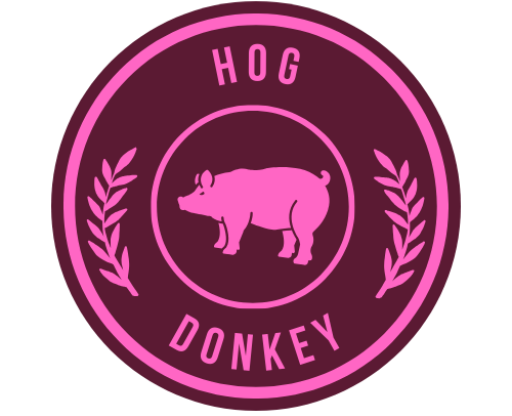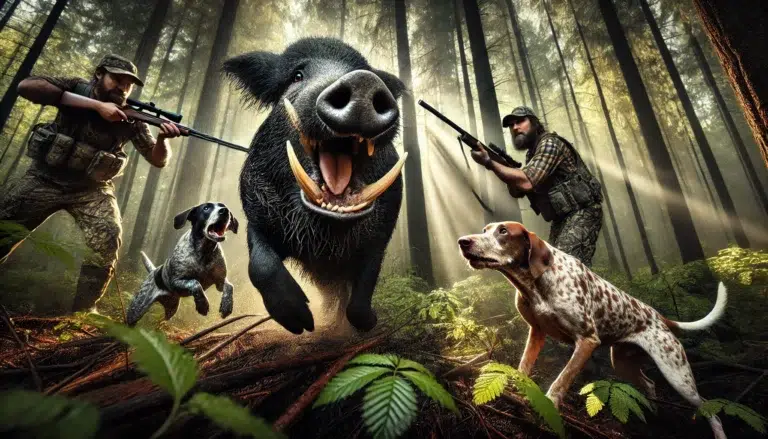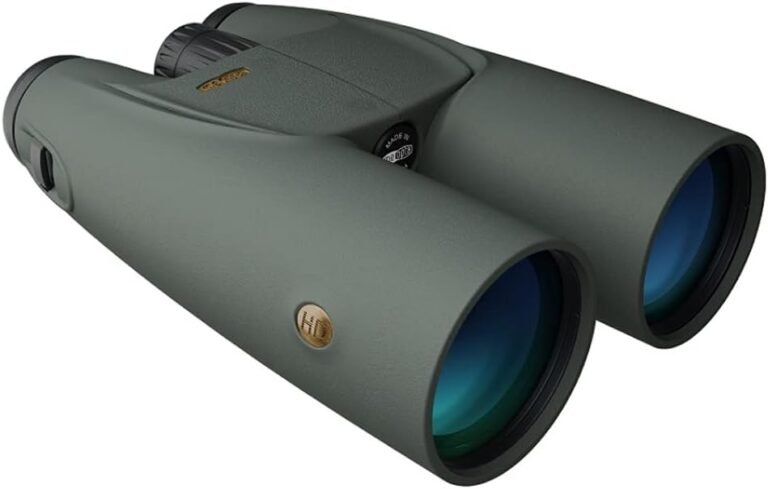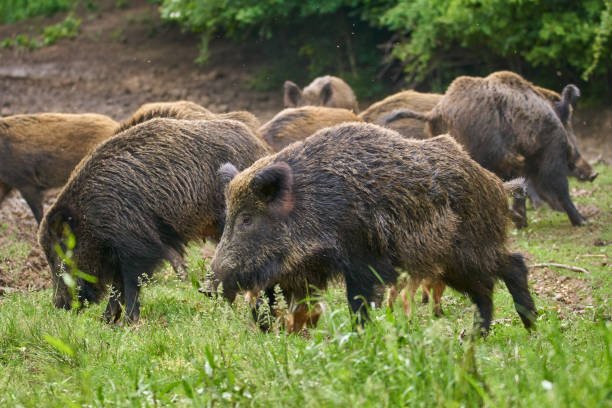Shotgun Selection for Hog Hunting: 3 Amazing Tips
Hog hunting has evolved from a recreational activity to a vital necessity in many regions. These wild, feral hogs threaten crops, ecosystems, and human safety. In this blog we will discuss shotgun selection for hog hunting and why the right decision can make the difference in your approach.
The Dual Role of Hog Hunters
Hog hunters are not merely thrill-seekers; they play an essential role in maintaining the ecological balance while protecting agricultural interests. Their efforts contribute to population control by removing excess hogs that have reproduced unchecked due to their unnaturally adaptive nature. However, hog hunting is not without its challenges.
These intelligent creatures are highly adaptable and possess formidable physical strength. Choosing the right shotgun is paramount to ensure success in this pursuit while maintaining safety standards for humans and animals.
The Significance of Selecting the Right Shotgun
Selecting an appropriate shotgun is crucial when venturing into hog-hunting territory. It can be seen as akin to choosing your trusted companion for this thrilling pursuit—one that offers precision, power, and reliability when it truly matters. Shotgun choices encompass various factors such as gauge selection (12-gauge being the most popular), barrel length options (ranging from 18 inches up to 30 inches), choke types (cylinder, modified, or full), and ammunition choices (buckshot, slugs, or birdshot).
Each of these considerations plays a vital role in the effectiveness of your shots. Finding the optimal combination that suits your hunting style, terrain, and personal preferences will ultimately enhance your chances of success on every adventure.
Shotgun Gauges and Their Impact on Hog Hunting
Explanation of shotgun gauges (12, 20, 16, etc.)
The gauge is one of the most important factors to consider regarding shotgun choices for hog hunting. The gauge refers to the diameter of the shotgun’s bore, and each gauge has characteristics that can significantly impact performance.
Common gauges for hog hunting include 12-gauge, 20-gauge, and even 16-gauge shotguns. A 12-gauge shotgun is popular for hog hunters due to its versatility and wide range of available ammunition.
It offers a substantial amount of power with a larger payload capacity. On the other hand, a 20-gauge shotgun is lighter in weight and produces less recoil than a 12-gauge.
This can be advantageous for those who prefer a more manageable firearm or have concerns about recoil-related accuracy issues. The less common but still viable option is the 16-gauge shotgun, which balances the power of a 12-gauge and the reduced recoil of a 20-gauge.
Pros and cons of different gauges about hog hunting
Each gauge has its pros and cons when it comes to hog hunting. Let’s delve into them further: For starters, when considering recoil management for accuracy and follow-up shots during intense hog hunting situations; it’s essential to note that a heavier load in terms of shot weight will invariably generate more recoil.
Therefore, opting for a lighter load may be preferable if you’re concerned about maintaining accuracy after taking your first shot or simply want faster follow-up shots without compromising control over your firearm. Moreover, effective range is important when choosing your shotgun gauge for hog hunting.
Large gauges like the popular 12 gauge boast a longer maximum effective range due to their larger shot payloads. This can be advantageous when hogs are at a distance, allowing you to take accurate shots without sacrificing the chance of a clean kill.
However, it’s important to remember that shot pattern density decreases as the distance increases. Thus, if you expect to encounter hogs primarily at close range, a smaller gauge shotgun like the 20 gauge may provide ample power and tighter shot patterns for more consistent kills.
Understanding shotgun gauges and their impact on hog hunting helps make informed gauge and ammo choices. Recoil management is crucial for maintaining accuracy and follow-up shots, while effective range and shot pattern density considerations ensure optimal performance when encountering hogs at varying distances.
The Ideal Barrel Length for Hog Hunting Shotguns
When it comes to hog hunting, selecting the right shotgun with an appropriate barrel length is crucial. Shotgun barrels typically range from 18 to 30 inches, but for hog hunting, you’ll commonly come across barrel lengths of 18″, 20″, 24″, or even 26″. Each length has its advantages and considerations.
An 18-inch barrel is compact and perfect for maneuvering through dense vegetation or tight spaces. Suppose you’re hunting hogs in thick forests or brushy areas with limited visibility. In that case, a shorter barrel lets you swing your shotgun quickly without worrying about getting tangled up in branches or obstacles.
A shorter barrel makes your shotgun more manageable and easier to carry over long distances. On the other hand, if you anticipate engaging hogs at longer distances or prefer taking shots from a distance while maintaining accuracy, a longer barrel might be your best bet.
The extra length can help improve long-range accuracy by providing a greater sight radius and reducing muzzle rise when firing. This can be particularly advantageous if you often hunt hogs in open fields or larger areas where long shots are common.
Selecting the Optimal Choke for Hog Hunting Shotguns
Selecting the right choke is paramount to ensure a successful hunt for hog-hunting shotguns. Understanding the different choke types available will guide you toward achieving the desired shot pattern spread. Let’s take a closer look at some common choke options:
1. Cylinder Choke: As the name suggests, this choke offers no constriction and provides an open shot pattern spread. It is ideal for close-range shots, where hogs may surprise you with their sudden appearance.
2. Improved Cylinder (IC) Choke: Slightly tighter than the cylinder choke, this option offers more constriction and control over your shot pattern. The IC choke balances close-range effectiveness and maintains a wider pattern for medium-range shots.
3. Modified Choke: Moving up in constriction, the modified choke is suitable for medium-range engagements. It provides good versatility by striking a balance between pellet density and spread.
4. Full Choke: If long-range accuracy is your goal, look no further than the full choke. This tightens the shot pattern substantially, ensuring greater pellet density on your target, but limits its effective range.
Finding Equilibrium: Balancing Penetration Power with Pellet Density
Choosing an appropriate choke for hog hunting involves finding an equilibrium between penetration power and pellet density in your shot pattern. For hog hunting scenarios where brush or foliage may obstruct your line of sight or where hogs are likely to be encountered at close quarters, using chokes like cylinders or improved cylinders allows for wider patterns that increase your chances of hitting the target even if you miss slightly due to sudden movements from these agile creatures.
On the other hand, when engaging targets at longer distances or when accuracy becomes crucial to achieve humane kills, opting for chokes like modified or full will provide tighter shot patterns. These deliver greater pellet density, ensuring deeper penetration and maximizing the energy transferred to the hog upon impact.
Remember, hogs possess a muscular build and thick hides that demand sufficient pellet penetration to incapacitate them effectively. Hence, striking a balance between pellet spread and power should be on your mind when making choke selections for hog-hunting shotguns.
Now that we’ve explored choke types and factors to consider while choosing chokes for hog-hunting shotguns, it’s time to move on and delve into another crucial aspect: ammunition choices. Stay tuned as we uncover the best ammo options for hog-hunting adventures!
Ammunition Choices for Hog Hunting Shotguns
When it comes to hog hunting, selecting the right ammunition is crucial. There are three common types of ammunition used in shotguns for hog hunting: buckshot, slugs, and birdshot.
Buckshot refers to multiple lead balls packed into a shotgun shell. The number of pellets and their size can vary depending on the specific load. Buckshot is the go-to choice for hog hunting due to its versatility. The multiple pellets provide a widespread pattern that increases the chances of hitting a moving target like a hog.
It offers excellent stopping power at close to medium ranges, making it ideal for encounters with these tough beasts. On the other hand, slugs are single solid projectiles that offer tremendous penetration power.
They deliver a heavy punch and are effective at longer distances. Slugs are perfect when you need to take down a hog from afar or deal with larger specimens that may require more stopping power.
Birdshots consist of tiny pellets designed for hunting birds and small game. While not typically used as the primary choice for hog hunting due to its limited stopping power, it can still be effective in certain situations, such as close-range encounters or targeting smaller hogs.
Factors Influencing Ammunition Selection
As you consider your ammunition options for hog hunting shotguns, two key factors should influence your decision: effective range and stopping power against hogs, environmental impact, and safety considerations. Firstly, think about the distance at which you’ll be engaging hogs.
If you expect most of your shots to be taken within proximity – say 30 yards or less – buckshot would be an excellent choice due to its spread pattern and ability to deliver multiple hits on target. However, slugs might be a better option if you anticipate longer shots, such as 50 yards or more, as they retain accuracy and power over greater distances.
Secondly, consider the environmental impact and safety aspects of your ammunition choice. Buckshots and slugs have a higher potential for over-penetration compared to bird shots.
Over-penetration carries the risk of unintended damage to property or injury to bystanders, so it’s crucial to weigh these factors when selecting ammunition. Remember, each shotgun gauge may have different options for ammunition types, so check compatibility with your firearm before making any final decisions.

Enhancing Shotgun Performance in Hog Hunting
Optics: Red dot sights or scopes suitable
Regarding hog hunting, having the right optic can make a difference. While shotguns are typically used for close-range encounters, adding a red dot sight or scope can greatly enhance your accuracy and target acquisition. Red dot sights offer a quick and easy way to aim, providing a clear and illuminated reticle for rapid target acquisition.
They are particularly useful in low-light situations when hogs are most active. On the other hand, scopes provide magnification and allow for precise aiming at longer distances.
Both red dot sights and scopes have advantages depending on your hunting style and preferences. Red dots excel in fast-paced situations where quick shots are necessary, while scopes offer better clarity and precision for long-range shots.
Consider the terrain you’ll be hunting in and the average distance you’ll engage hogs when choosing between these options. Ultimately, having an optic on your shotgun can greatly improve your accuracy and increase your chances of a successful hunt.
Conclusion
Selecting the right accessories to enhance your shotgun’s performance is essential for successful hog hunting expeditions. Adding optics like red dot sights or scopes can significantly improve accuracy, target acquisition speed, and overall hunting experience.
Furthermore, investing time in researching different accessories tailored to hog hunting will help you make informed decisions on what works best for you. Remember that each hunter has preferences based on their shooting style, environment conditions, and personal comfort level with specific accessories.
Experimenting with different setups will allow you to fine-tune your shotgun choices by gauge, ammo, and accessories that suit your needs best. So go out there armed with knowledge about shotgun selection and well-chosen accessories tailored to hog hunting requirements—happy hunting!





